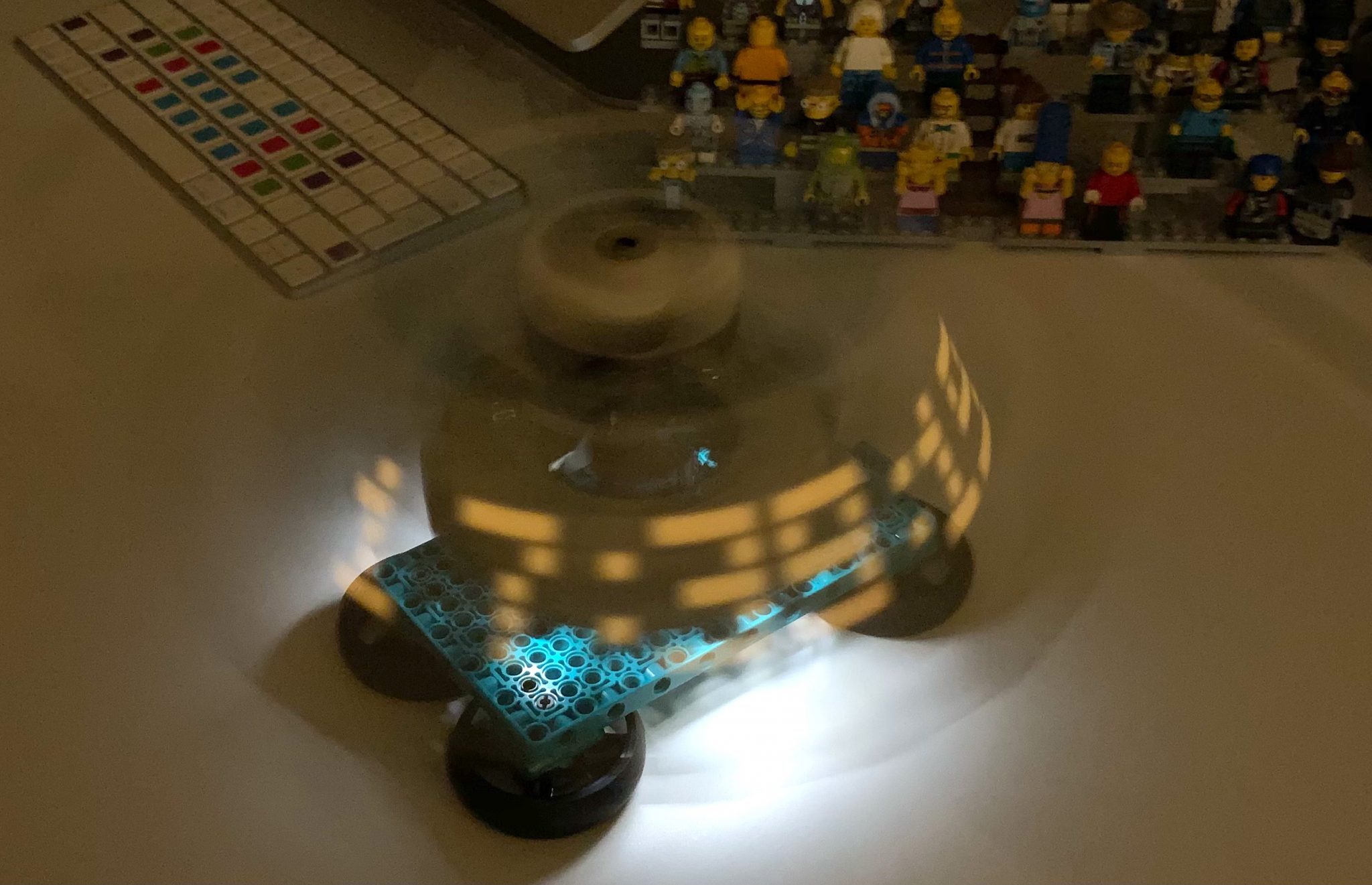
- PERSISTENCE OF VISION 3D CLOCK HOW TO
- PERSISTENCE OF VISION 3D CLOCK MAC OS
- PERSISTENCE OF VISION 3D CLOCK MOVIE
- PERSISTENCE OF VISION 3D CLOCK SOFTWARE
- PERSISTENCE OF VISION 3D CLOCK CODE
PERSISTENCE OF VISION 3D CLOCK MOVIE
Once the frame files have been created, they must be combined into a single movie file. For each frame, the animator can move the object, the camera or the lighting, or a combination of all three. To create animations, POV-Ray provides a "clock" that generates multiple frames and saves each one as a PNG file. I didn't initially set out to animate my experiment, but in poking around on the POV-Ray wiki, I found two articles that indicated it wasn't particularly difficult: HowTo:Create animations and HowTo:Encode animations as Ogg Theora Video. " style="width: 520px height: 390px " title="Sphere created using POV-Ray" typeof="foaf:Image"> Action! Issuing the command povray +IHelloSphere.pov in your favorite shell generates HelloSphere.png shown below.

Look_at // X, Y and Z coordinates of where the camera is aimed Location // X, Y and Z coordinates of the camera X, Y, and Z coordinates of the light source #include "colors.inc" // Include color name macros Annotated example from POV-Ray tutorial
PERSISTENCE OF VISION 3D CLOCK CODE
Save the following code as a file named HelloSphere.pov. Here's how I created an object and an animation. Fortunately, POV-Ray provides macros for a number of pre-built popular textures. The tutorial also talks about textures, but for a beginner such as myself, producing textures like "wood" and "sky" was rather complicated. Multiple links rotated 90° from each other, and properly offset can form a chain. Joining cylinders to each side of a half-torus, and adding another half-torus rotated 180°, results in a chain link.

Using these techniques, one can, for example, create a "half-torus" by obscuring a torus with a box. These shapes can be combined by overlapping them and taking the union (logical OR), intersection (logical AND), or difference (logical XOR). The tutorial then describes the basic 3D shapes: sphere, cylinder, cone, box, and torus (i.e.
PERSISTENCE OF VISION 3D CLOCK HOW TO
The tutorial begins by explaining how to position a "camera" to represent the viewer's point of view, a shape to be looked at, and lighting to simulate the reflections and shadows cast by the shape. In order to achieve 3D realism, the viewer must be able to see light and shadow behave in a credible way.
PERSISTENCE OF VISION 3D CLOCK MAC OS
Linux, Mac OS X, and Windows binaries are available.Īfter reading the POV-Ray tutorial that explains how to create basic shapes and join them together, I was able to produce a simple seven second animated video. Because POV-Ray images are generated from scripts, other applications could be used to gather raw data and format it into scripts that could then be used by POV-Ray to generate the final images. And, looking at the POV-Ray Hall of Fame reveals the amazing photo-realism and surrealism that the program is capable of producing.Īdditionally, POV-Ray can-with a little help-become a data visualization tool in the same way that many spreadsheet programs and other applications are used to generate graphic representations of raw data (e.g. POV-Ray (Persistence of Vision Raytracer) generates images from a text-based scene description. Getting started with POV-RayĪ raytracer is a program that creates 3D images by mathematically predicting where rays of light will strike an object, where they will either be reflected or absorbed.

PERSISTENCE OF VISION 3D CLOCK SOFTWARE
So, with that in mind, and a little experience producing 2D shapes by writing raw SVG, I looked for open source software that would allow me to describe 3D shapes with a keyboard rather than draw them with a mouse. I had written code in a variety of programming languages to produce circles, pie charts, sine waves, and the like. The only open source software that I had heard of that could produce fantastic 3D work was Blender, but I thought I would need a steadier hand than I possessed and a Wacom tablet. Although I doodle and took art classes in high school, my drawings are not anything special, and my previous attempts to draw with a mouse or trackball have been disastrous. The problem is that they often lack the equipment, skill, or both, to produce them.Įnter POV-Ray, open source 3D image rendering software.Ī few winters ago, while hiding from the weather, I decided-not for the first time-to learn about producing 3D images. Realistic images of 3D objects-that can be viewed from any angle, and in a variety of lighting conditions-are something of great value to artists, designers, architects, scientists, and many others.


 0 kommentar(er)
0 kommentar(er)
